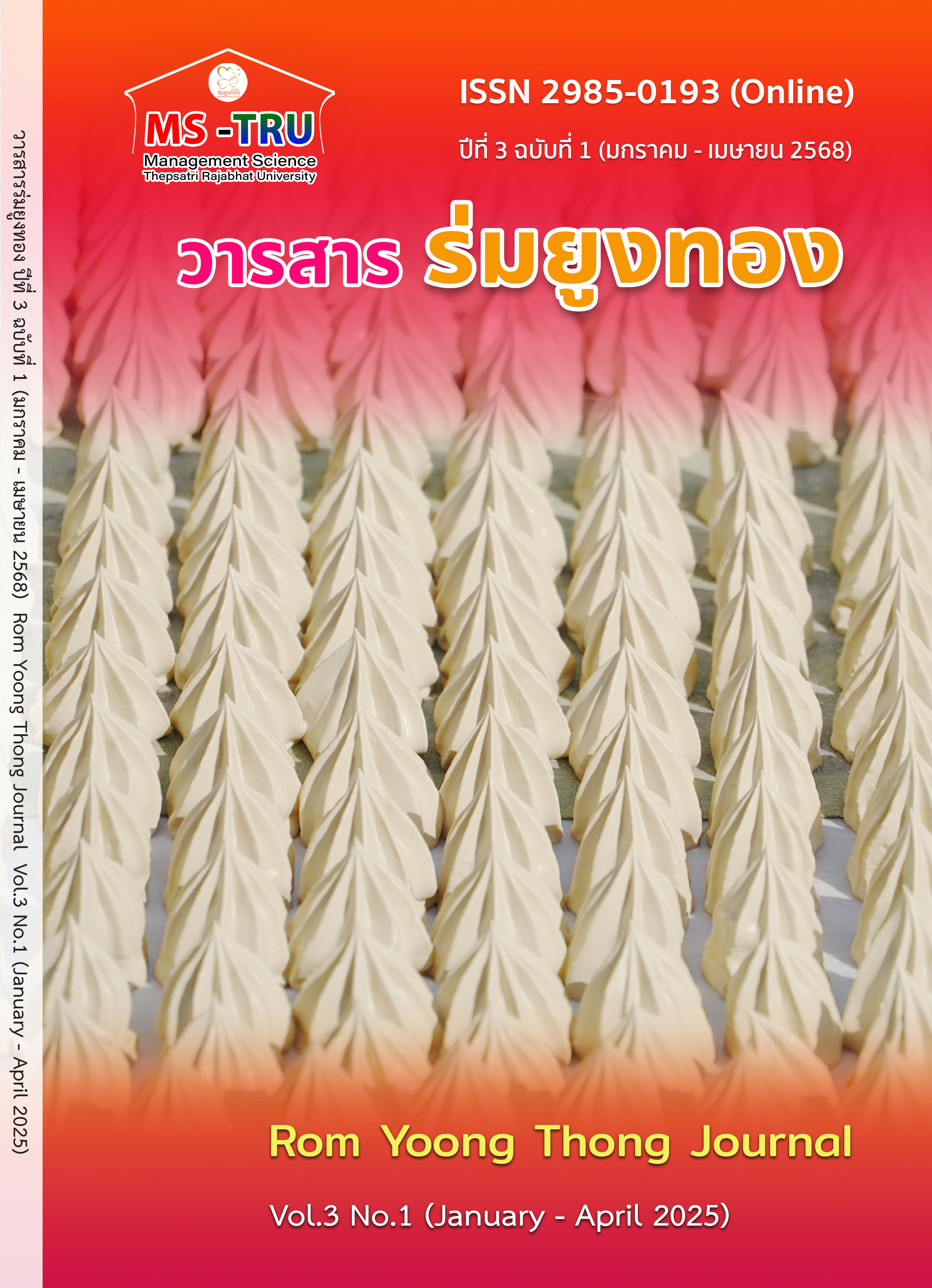Thai Youth's Perceptions and Opinions on the "Nor 18" Rating Symbol in Television Programs
Keywords:
“Nor 18” symbol, perception, viewing behavior, media literacy, televisionAbstract
This study examined Thai youth's perceptions, opinions, and behaviors regarding the "Nor 18" rating symbol in television programs and evaluated its effectiveness as a content warning and age-appropriate guidance tool. A mixed-methods approach was employed, with quantitative data collected through convenience sampling from 217 respondents via online surveys, and qualitative data gathered through purposive sampling with in-depth interviews conducted among four undergraduate students.
The findings revealed that 99.1% of the participants correctly identified the symbol's meaning. It was most frequently encountered in movies (61.8%), violent content (59.9%), and programs containing coarse language (58.5%). Notably, 96.3% reported having watched such programs before reaching the recommended age, and 91.7% continued watching even after seeing the symbol, with 46.5% stating that they were already adults capable of making their own decisions. Furthermore, 78.8% perceived the symbol as moderately to extremely necessary, and 52.5% believed it effectively raised awareness of content sensitivity.
This study recommends the implementation of content-specific warning labels, the development of policies aligned with youth media consumption behaviors in the digital age, and the integration of media literacy into the rating system to enhance its role in protecting and educating young audiences.
References
กองทุนพัฒนาสื่อปลอดภัยและสร้างสรรค์. (2567). การจัดเรตติ้งรายการ: ตัวกรองเนื้อหาสื่อโทรทัศน์สำหรับ
เด็ก. สืบค้นจาก https://www.thaimediafund.or.th/article-29042567/
นิษฐา หรุ่นเกษม. (2566). คู่มือหลักสูตรการพัฒนาการส่งเสริมความเข้มแข็งเครือข่ายผู้บริโภคสื่อ (กลุ่มความ
หลากหลายทางเพศและความหลากหลายทางสังคม): MODULE 2: รู้จักสิทธิของผู้บริโภคสื่อ. [คู่มือ].
สำนักงาน กสทช.
Bandura, A. (1986). Social foundations of thought and action: A social cognitive theory.
Prentice Hall.
Bandura, A. (1997). Self-efficacy: The exercise of control. W.H. Freeman.
Bandura, A. (2001). Social cognitive theory of mass communication. Media Psychology, 3(3),
–299.
Gerbner, G., Gross, L., Morgan, M., & Signorielli, N. (1986). Living with television: The dynamics
of the cultivation process. In J. Bryant & D. Zillmann (Eds.), Perspectives on media
effects (pp. 17–40). Lawrence Erlbaum Associates.
Hirsch, P. M. (1980). The “scary world” of the nonviewer and other anomalies: A reanalysis of
Gerbner et al.'s findings on cultivation analysis, part I. Communication Research, 7(4),
-456.
Krafft, H., Boehm, K., Schwarz, S., Eichinger, M., Büssing, A., & Martin, D. (2021). Media Awareness
and Screen Time Reduction in Children, Youth or Families: A Systematic Literature
Review. Child Psychiatry & Human Development, 54, 815–825.
LaRose, R., & Eastin, M. S. (2004). A social cognitive theory of Internet uses and gratifications:
Toward a new model of media attendance. Journal of Broadcasting & Electronic
Media, 48(3), 358-377.
Livingstone, S. (2004). Media literacy and the challenge of new information and communication
technologies. The Communication Review, 7(1), 3–14.
Martins, N., Matthews, N. L., & Ratan, R. A. (2019). Playing by the rules: Parental mediation of
video game play. Journal of Family Issues, 40(8), 1120-1145.
McQuail, D. (2010). McQuail's mass communication theory (6th ed.). SAGE Publications.
Morgan, M., & Shanahan, J. (2010). The state of cultivation. Journal of Broadcasting & Electronic
Media, 54(2), 337–355.
Morgan, M., & Shanahan, J. (2017). Television and the cultivation of authoritarianism: A return
visit from an unexpected friend. Journal of Communication, 67(3), 424-444.
Morgan, M., Shanahan, J., & Signorielli, N. (2015). Yesterday's new cultivation, tomorrow. Mass
Communication and Society, 18(5), 674-699.
https://doi.org/10.1080/15205436.2015.1072725
Pajares, F., Prestin, A., Chen, J., & Nabi, R. L. (2009). Social cognitive theory and media effects.
In R. L. Nabi & M. B. Oliver (Eds.), The SAGE handbook of media processes and effects
(pp. 283-297). SAGE Publications.
Potter, W. J. (2014). A critical analysis of cultivation theory. Journal of Communication, 64(6),
-1036.
Shrum, L. J. (2017). Cultivation theory: Effects and underlying processes. In P. Rössler, C. A.
Hoffner, & L. van Zoonen (Eds.), The international encyclopedia of media effects (pp.
-12). Wiley-Blackwell.
Downloads
Published
How to Cite
Issue
Section
License
Copyright (c) 2025 คณะวิทยาการจัดการ มหาวิทยาลัยราชภัฏเทพสตรี

This work is licensed under a Creative Commons Attribution-NonCommercial-NoDerivatives 4.0 International License.





